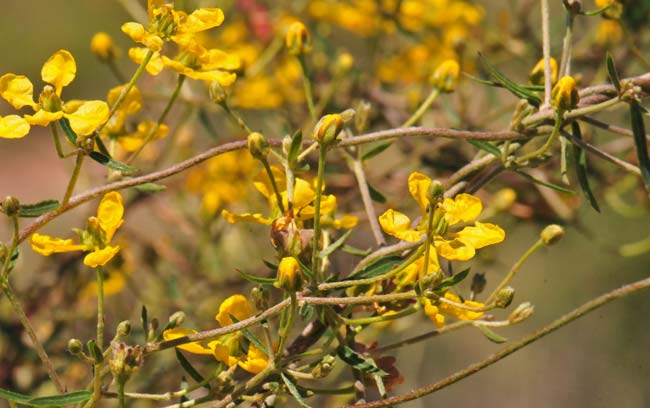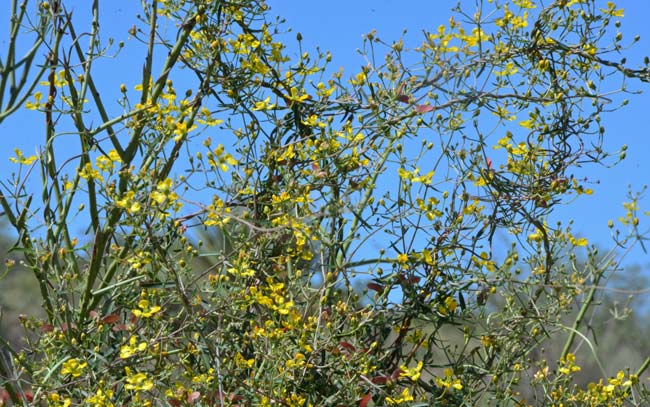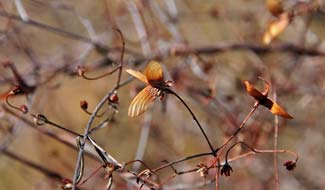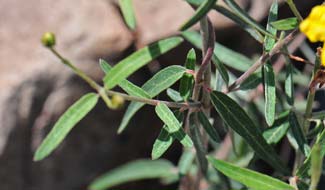Janusia (Cottsia) gracilis, Slender Janusia





Scientific Name: Janusia (Cottsia) gracilis
Common Name: Slender Janusia
Also Called: (Spanish: Fermina)
Family: Malpighiaceae, Barbados Cherry Family
Synonyms: (Janusia gracilis)
Status: Native
Duration:
Perennial
Size: Up to 3 feet or more, vertical height dependent on adjacent vegetation.
Growth Form: Forb/herb, vine; stems slender, twining and often tangling each other.
Leaves: Green; opposite, linear, short petiole, pubescent narrow to narrowly lanceolate with fine , visible midline is whitish-gray.
Flower Color: Yellow; 5 petals/sepals, petals, about ½ inch across, clawed, flowers with oil glands subtending sepals, fruit is a samara typically in pairs.
Flowering Season: April to October or year-round under suitable conditions.
Elevation: 1,000 to 5,000 feet.
Habitat Preferences: Dry rocky slopes in lower and upper deserts and transition areas.
Recorded Range: A rare species in the United States where Slender Janusia is found primarily in Arizona with small populations in New Mexico and Texas. It is also common in Baja California and Mexico.
In Arizona, Slender Janusia is found in the northwest, central and southern parts of the state.
North America & US County Distribution Map for Janusia gracilis.
U.S. Weed Information: No information available.
Invasive/Noxious Weed Information: No information available.
Wetland Indicator: No information available.
Threatened/Endangered Information: No information available.
Comments: Slender Janusia is rare in the United States but locally common where found in Arizona. The species Cottsia gracilis has recently undergone a taxonomic change from the genus Janusia to the genus Cottsia, some authorities consider this change unresolved.
Slender Janusia is similar Chaparral Asphead (Aspicarpa hirtella) however Chaparral Asphead is more of a prostrate trailing shrub while Slender Janusia is a vine, other differences are the petal margins of Chaparral Asphead which are clearly fringed and their leaves are much larger.
The common name of the family, Barbados Cherry is derived from the type species Malpighia emarginata, a South and Central American tropical fruit-bearing shrub which, in addition to Barbados Cherry, is also called Acerola, Indian Cherry and Wild Crepe Myrtle.

